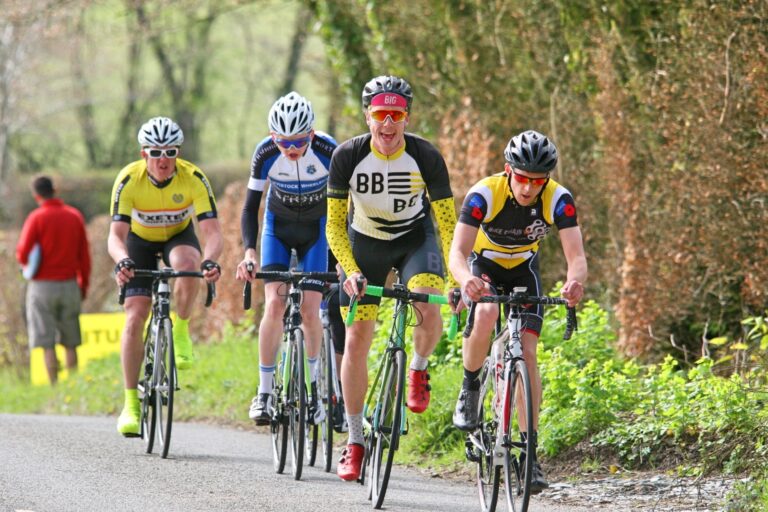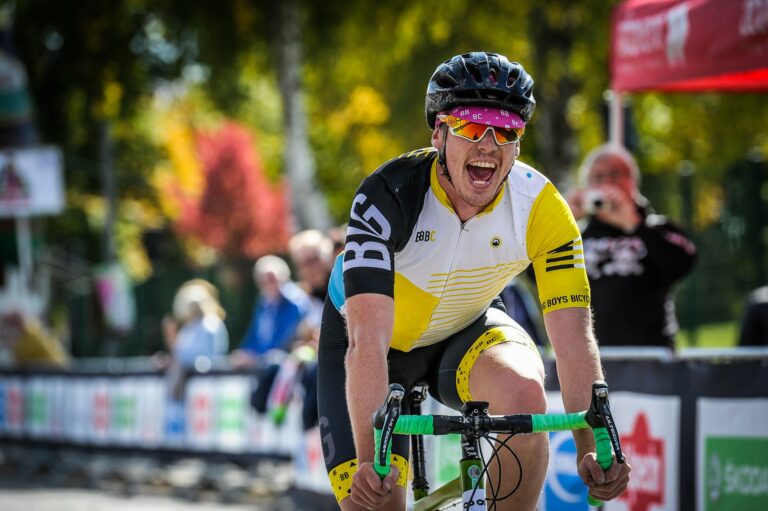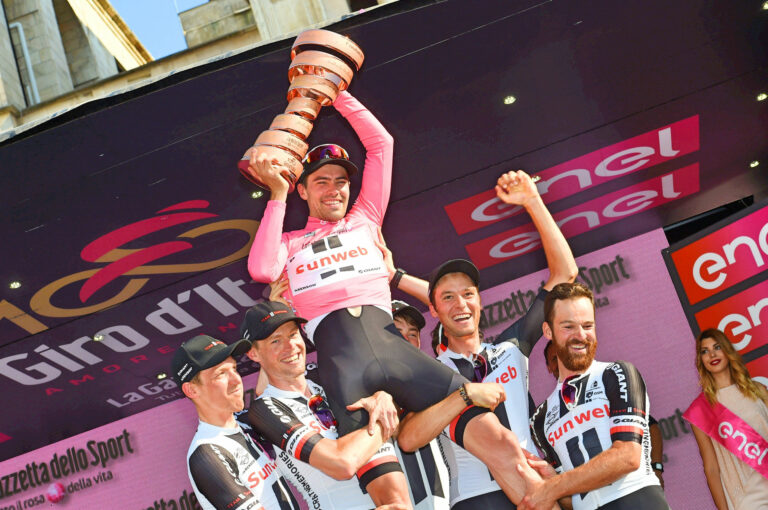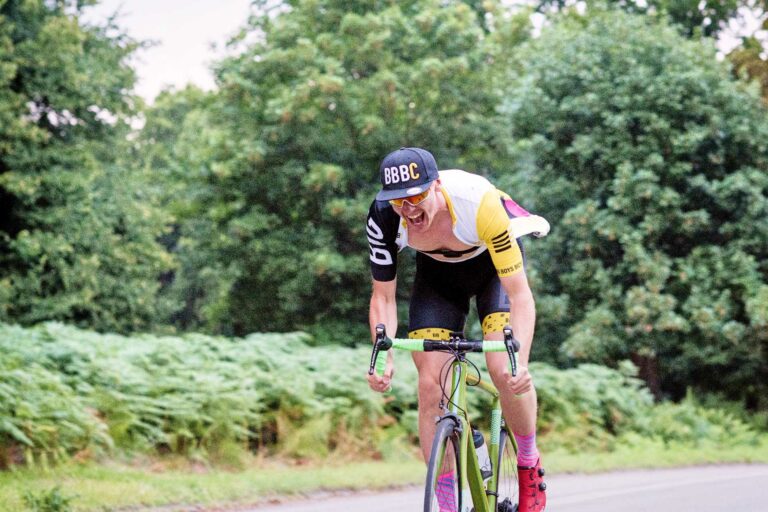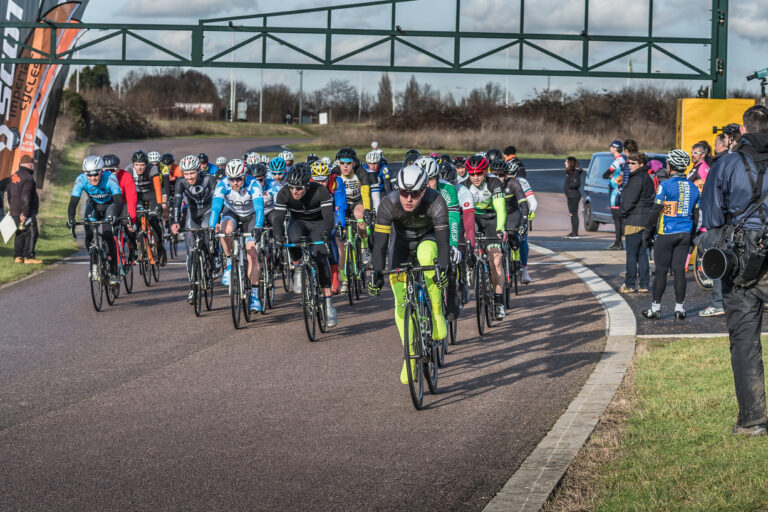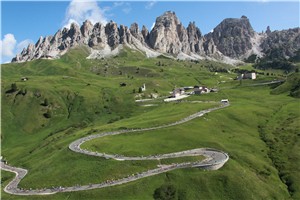
Rather than tackling the full-on 138km Gran Fondo, the year before last I rode the short course of the Maratona Dles Dolomites . Although I claimed mechanical problems, the chief reason was my lack of fitness and a burgeoning weight problem.
Some of us can train as much and as hard as we want to; others have jobs, friends, family, pets, lawns & gardens, elderly relatives, ailing neighbours and a host of other legitimate reasons not to be on a bike. Last year for me was the nexus of all these things crashing into the vortex of too much work and too many hotel breakfasts, lunches and dinners. I hardly rode my bike.
This time was to be different and I lined up for the start of the Maratona another year older, but 20 odd pounds lighter, with a lot of miles in my legs and a plan (erm… the plan was in the head rather than my legs).
The mantra running through my brain was ‘take it steady, no rush, not a sprint…’
The first pass, (the Campolongo) is pretty easy, the hairpins at the base giving an early, gentle warning of what’s to come later. It’s not hard, but it is very busy first time up. A fast descent into the village of Arraba and right at the T, onto the 33 hairpins of the Pordoi. A beautiful, 9 kilometre ribbon of road that steadily takes you to the top. There are no great surprises on the Pordoi, 7%ish all the way and views of Alpine perfection up or down.
Over the top and down she goes – lots of nervous descenders around me, probably because I’ve been religiously sticking to my mantra and I am amongst a slow group that I now leave behind at light speed.
A top tip on descending the Pordoi that you will thank me for (if you remember before, rather than after it happens) is that when you turn right at the bottom it’s immediately a very, very steep climb back up. There is always mayhem as people desperately crash down searching for a lower gear that will keep them rolling. Drop to your lowest gear before the turn and deftly pick your way through the carnage to the feed station at the bottom of the Sella, saying ‘thank you Jon’.
As you approach the wonderfully organised and supplied feeds, things slow right down. Watch out for those who like to stop dead in the middle of the road!
The paranoid (who’s going to nick your bike? The roads are closed…) take their mounts to the tables, creating holy hell to get to the ham & cheese rolls, sweet stuff, fruit and drinks. The sensible leave their bikes and get there unencumbered.
Again there are no surprises on the Sella, the pass that takes you over to the Val Gardena. Again it’s around 7% although it does have a short section at 10% somewhere around the middle. I was still feeling good and still listening to my inner voice ‘take it steady…’.
The descent is fast and fun and, having done the ride a few times now, it’s where you always see the first ambulances waiting. A few people invariably overcook the bends after the fast straight and the results can make for uncomfortable viewing.
The Gardena is a straightforward enough climb, which, after ascending for a few kilometres, even throws in a respectable kilometre or so of slight downhill before the short climb to the pass. Its average gradient is a mere 4.3%, but that includes the downhill section, so although comparatively easy, it’s not THAT easy.
For those choosing the short course, they only have the descent of the Gardena left. It’s my favourite descent, beautiful and technical.
Arriving back in Corvara, you pass through the finish if you decide that’s enough, or go to the side of it if you want to go on. All decisions about which course can be taken on the road, you don’t have to choose until you get there.
Over the Campolongo for the second time, it starts to feel like an old friend. By now though, the sun is fully up and the climb is a lot warmer than the first time.
At Arraba you now turn left instead of right. No need to shift down the gears, you’ve got over 10ks of slight downhill, often with stunning views to your right. As I flew down this section another thought process had moved to the front of my mind. I was fast approaching the big decision, left for the medium course and the Falzerego, or right for the Giau, plus the Falzerego from the easier, other side.
I was feeling good, I’d gone very steadily, what was I going to do other than choose the Giau? Turn right and drop like a stone for absolutely ages with an internal dialogue of ‘woah, tremendous fun, but I know I’m going to have to get all this height back soon’.
The Giau is a monster 10%+ all the way (29 turns, count ‘em, and 9.5 kilometres). Although it has them in spades, thoughts of beautiful views fade into the background as you just slog. The only brief respites are where the road crosses the river. I’m not sure if it’s an optical illusion but the road seems to steepen in the short, straight tunnels, particularly the last one. There were lots of people walking sections of this climb. I was thinking ‘if I start walking, it’s a long, long way to the top’. A few people afterwards expressed surprise that I’d done the Giau without stopping. If I’d stopped, I’d still be there now!
This is where I got unlucky for the first time. The weather had clouded and cooled about two thirds of the way up. I was chatting to a Dutch rider about how welcome this was, when I looked up and saw the first big black clouds overhead. Soon the rain started. It was nice at first, cooling and with the gorgeous smell of rain on dust, then someone turned the power shower on. Cresting the top, I was soaking and cold. I stopped briefly at the feed to put on all my clothes and quickly grab some food and fill my bottles.
Do you descend slowly to minimise wind chill or go like the clappers to lose altitude as quickly as possible? Answers on a postcard please. I chose the latter option and only began to feel warm again halfway up the Falzerego, which is a pretty easy climb from this side.
The ride has one final sting in the tail before it lets you go, though. After the feed at the top of the Falzerego, you’ve got a couple of kms up the Valparola before you get to go all the way down. It really shouldn’t be as hard as it is, but it’s a stiff slog to get over the top. Then you fly down and if you’re still up for it you can start racing for the finish at Corvara.
Brit Jamie Burrow led almost 9000 people home in 2009. It really is a wonderful ride.



